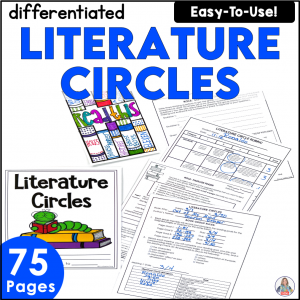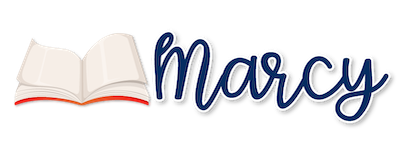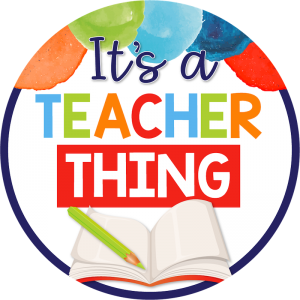
Literature circles are a great addition to a classroom reading program. To create effective literature circles, it’s important to understand the literature circle roles (jobs) students will take on as part of their reading group responsibilities. Perhaps the most important literature circles role is that of discussion director.
What is the role of Discussion Director in Literature Circles?
The Discussion Director is the student who runs the literature circle meeting. In this literature circle role, a student is responsible for running the meeting, keeping things moving, and encouraging students to stay on track. The Discussion Director will start the meeting and end the meeting. It’s important to provide this student with a list in order of how you want the meeting to be run. See the list below.
How to Select a student for the Literature Circles Role of Discussion Director
For the first meeting, I like to select the literature circles roles. Selecting an effective Discussion Director for the first meeting is key. I look for these traits when making the selection:
- Does the student complete the reading?
- Does the student feel comfortable speaking in a group setting?
- Does this student encourage others?
- Does this student show the ability to be flexible?
By selecting a student who fits these traits to run the first meeting, you are setting an example for the students that will be Discussion Directors in future meetings. This is KEY.
How does the literature circles role of Discussion Director start a meeting?
Before the first meeting, work with the first group of Discussion Directors to prep them for this literature circle role. Explain how to welcome students to the group by saying something simple like,
“Welcome to our literature circle meeting on …(name the novel).”
Explain the Discussion Director Directions. This is a step-by-step list to help the director lead the meeting. Check out this blog post about how to start literature circles in your classroom.

It’s important to review the literature circle roles for each student, but this is most important for this Discussion Director. You’ll find this form above in the Literature Circles unit I’ve created. It has everything you’ll need to run successful literature circles.
How does the role of Discussion Director help move the meeting along?
The Discussion Director starts by calling on students to share their literature circle jobs. It’s important to note that after each share, a discussion can arise. The Director may say something like, “Thank you for your summary. Does anyone have something else to add?” Or even a sentence similar to, ” I’d like to add…”, so that conversation can start.
There are, of course, times when a conversation doesn’t fit. In this case, it’s time for the Discussion Director to move on to the next item on the list. Here’s what this person might say, “Next, we’re moving on to asking our higher-level thinking questions. Remember, we are using our rules for having a discussion when agree, disagree, offer another point of view, etc.”
This might be the perfect time for the Director to review the rules of discussion. Note: as the teacher, I usually do this before each meeting begins. This sets a tone and reminds students of the goal: constructive discussion of the reading.
How does the job of Discussion Director deal with a conflict during literature circles?
A Discussion Director can remind students of the rules for speaking and listening. However, it’s not the student’s job to deal with classroom management. The teacher is there, listening in, roaming the room. Keeping an eye out for any issues that may arise.
What does the literature circles role of Discussion Director contribute to the meeting?
The Discussion Director has a specific job. In addition to leading the group, It’s the Director’s task to ask 3 high-level thinking questions and to lead a discussion about each. Because of the responsibility of running the group, the specific tasks are minimal. However, coming up with 3 thinking questions isn’t always that easy. Check out their specific job page below.

Notice that question starters and examples have been provided. This support is pivotal not only to the Director, but it’s also helpful to all other group members because each student needs to ask 1 high-level question.
In addition to this page, the Director also writes a brief summary, finds a key word for the Word Detective job that every students does for each meeting, finds an example of figurative language in the book (if it’s there), and completes the reading each day. Learn more about literature circles from this blog post about what you need to start literature circles in the classroom.
How does the Discussion Director end the literature circle meeting?
To end the meeting, the Discussion Director assigns new literature circles roles for the next meeting. As well, they give each student a general score on their participation. The group often helps the Director give these scores. And, when this is all done, the Director encourages the group to begin reading the next part of the book for the upcoming meeting.
For these reasons, I like to pick the director for the first meeting because this person sets the tone for the meeting and sets the example for the role of discussion director for future meetings.
Pin this blog post for later reference.




Leave a Reply